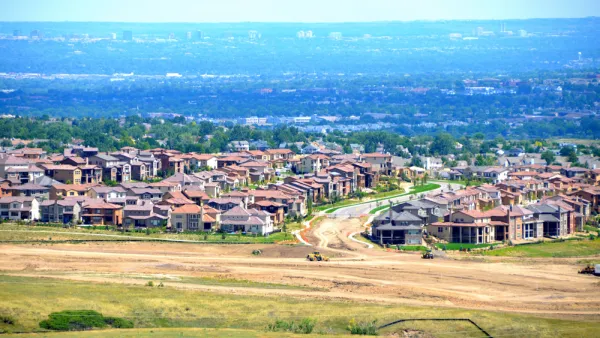The idea that half the world's population has moved to cities, with more coming soon, misses a fundamental fact about cities: many of them are actually suburbs.

An article by Courtney Humphries debunks the commonly cited statistic that half the world's population is living in cities. Karen Seto, a geographer at Yale University, is quoted directly to describe the lost nuance of that claim: "We don’t have 50 percent of the world living in cities….A lot of these people are living in towns and small centers." Or, as Humphries adds, "a far cry from Dubai."
Humphries credits the misconception to a 2007 report by the United Nations as well as the May special issue of the journal Science. An article also from May, by Randy Rieland, made a similar claim about the U.N. report in support of a different argument about the future potential of suburbs.
The problem under examination here: since the U.N. report, many people have been too quick to jump to conclusions about the definitions of "urban" and "city," when in fact many countries define those terms differently and in every country they mean more than one type of place. Humphries follows through to the consequences of the misconception:
Swapping one term for another seems like a harmless convenience. But it directs the attention on urbanization toward big cities — which are iconic and visible places — and away from less exciting areas, such as vast tracts of houses on the fringe of cities, or smaller but increasingly people-packed townships.
Not only does a too-narrow definition erase the many worthy people and causes that live and work in suburbs and small towns, a too-narrow definition also erases the negative externalities of suburban development patterns. Humphries describes that latter consequence as "[missing] the realities of where we live and how our sprawling ways are changing the world."
FULL STORY: Cities Are Not as Big a Deal as You Think

Analysis: Cybertruck Fatality Rate Far Exceeds That of Ford Pinto
The Tesla Cybertruck was recalled seven times last year.

National Parks Layoffs Will Cause Communities to Lose Billions
Thousands of essential park workers were laid off this week, just before the busy spring break season.

Retro-silient?: America’s First “Eco-burb,” The Woodlands Turns 50
A master-planned community north of Houston offers lessons on green infrastructure and resilient design, but falls short of its founder’s lofty affordability and walkability goals.

Test News Post 1
This is a summary

Analysis: Cybertruck Fatality Rate Far Exceeds That of Ford Pinto
The Tesla Cybertruck was recalled seven times last year.

Test News Headline 46
Test for the image on the front page.
Urban Design for Planners 1: Software Tools
This six-course series explores essential urban design concepts using open source software and equips planners with the tools they need to participate fully in the urban design process.
Planning for Universal Design
Learn the tools for implementing Universal Design in planning regulations.
EMC Planning Group, Inc.
Planetizen
Planetizen
Mpact (formerly Rail~Volution)
Great Falls Development Authority, Inc.
HUDs Office of Policy Development and Research
NYU Wagner Graduate School of Public Service




























